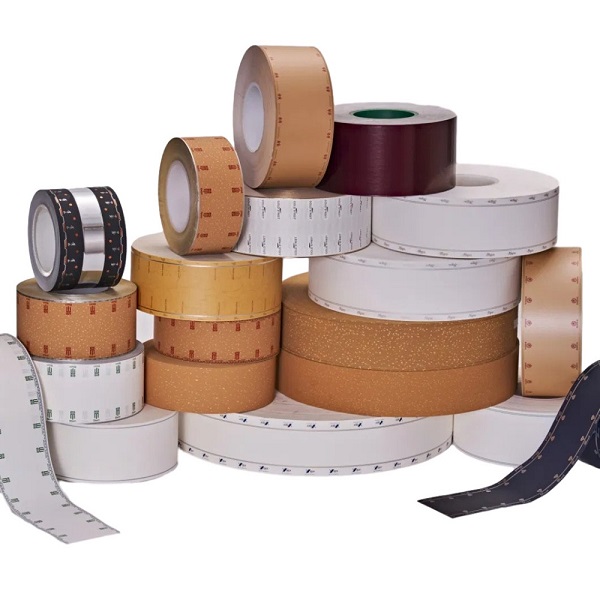Why Food Packaging Paper is Revolutionizing the Food Industry
Food packaging plays a vital role in product preservation, hygiene and brand presentation. In recent years, the demand for sustainable, safe and functional packaging materials has driven the rise of food packaging paper.
Food packaging paper refers to paper products designed specifically to meet the functional requirements of food storage, transportation and display. These papers are specially treated or coated to have moisture-proof, oil-proof and durable properties.
Key features include:
- Barrier: Designed to block oil, moisture and air to protect food freshness.
- Food safety standards: Made with FDA or EU approved materials to ensure food contact safety.
- Customization: The surface can be printed with brand logos, product information or promotional designs.
- Environmental protection: Usually made of renewable resources and biodegradable materials.
Advantages of specialty paper for food packaging
Specialty paper for food packaging has many advantages that traditional plastics or standard papers cannot match:
- Sustainability: Most specialty papers can be composted or recycled, which is an ideal choice for reducing plastic waste.
- Enhance product appeal: Premium textures and printable surfaces help enhance the unboxing and customer experience.
- Extend shelf life: Barrier coatings help preserve food freshness and flavor.
- Meet regulatory requirements: Specialty papers are often developed to meet global food safety standards.
- Versatility: Suitable for a variety of foods, from dry snacks to greasy takeouts.
Common applications for specialty papers for food packaging
Specialty papers are used in a wide range of food applications.
Their flexibility and performance make them a popular choice for:
- Bakery products: Wrappers and liners for bread, pastries and cakes.
- Fast food: Grease-resistant wrappers for burgers, fries and fried foods.
- Dairy and cheese: Breathable and protective papers that preserve flavor and texture.
- Frozen foods: Moisture-resistant composite papers for low-temperature environments.
- Snacks and dry goods: Pouches with shelf-life extension features.
Types of specialty papers for food packaging
There are many types of specialty papers for food packaging, each tailored for specific foods and usage scenarios:
- Waxed paper: Ideal for moisture and oil resistance.
- PE-coated paper: Excellent sealing properties and long-lasting durability.
- Glassine paper: Smooth, glossy paper with moisture and visibility protection.
- Silicon-coated paper: Used in baking and food release applications.
- Coated kraft paper: High strength and flexibility, often used in takeaway bags and wrapping paper.
Environmental impact and sustainability
One of the main drivers of innovation in specialty papers for food packaging is the growing demand for sustainable solutions. Unlike plastic packaging, which takes hundreds of years to decompose, specialty papers are increasingly being developed to be biodegradable and compostable.
Important sustainability aspects include:
- Use of renewable materials: Sourced from sustainably managed forests.
- Low carbon footprint: Manufacturing processes designed to reduce energy and water consumption.
- Recyclability: Many types of specialty papers can be recycled with other paper waste.
- Compostability: Some specialty paper varieties break down naturally in commercial or even home composting environments.
Trends Shaping the Future of Specialty Papers for Food Packaging
With growing consumer awareness and regulatory pressure, the future of specialty papers for food packaging is filled with innovation and expansion.
Key trends include:
- Digital printing: Customizable designs for small batches and seasonal promotions.
- Smart packaging: Integrated QR codes and freshness indicators.
- Bio-based coatings: Replacing petroleum-based barriers with plant-based alternatives.
- Multi-layer technology: Combining multiple layers of paper and biomaterials for optimal performance.
- Increased automation: Paper-based packaging is compatible with high-speed food packaging lines.
Choosing the right specialty paper for food packaging
Choosing the right specialty paper for food packaging requires understanding the specific needs of your products and operations:
- Type of food: Oily, wet, or dry foods require different barrier properties.
- Storage conditions: Frozen or shelf-stable products require packaging that can handle a variety of environments.
- Sustainability goals: Look for certifications such as FSC, compostable labels, or recyclable claims.
- Brands need: Choose papers that support high-quality printing or texture to enhance consumer engagement.
Specialty paper for food packaging is revolutionizing the way food is stored, displayed and consumed. With so many benefits, from sustainability to functionality, it’s no surprise that more and more companies are choosing paper packaging over plastic packaging.






























